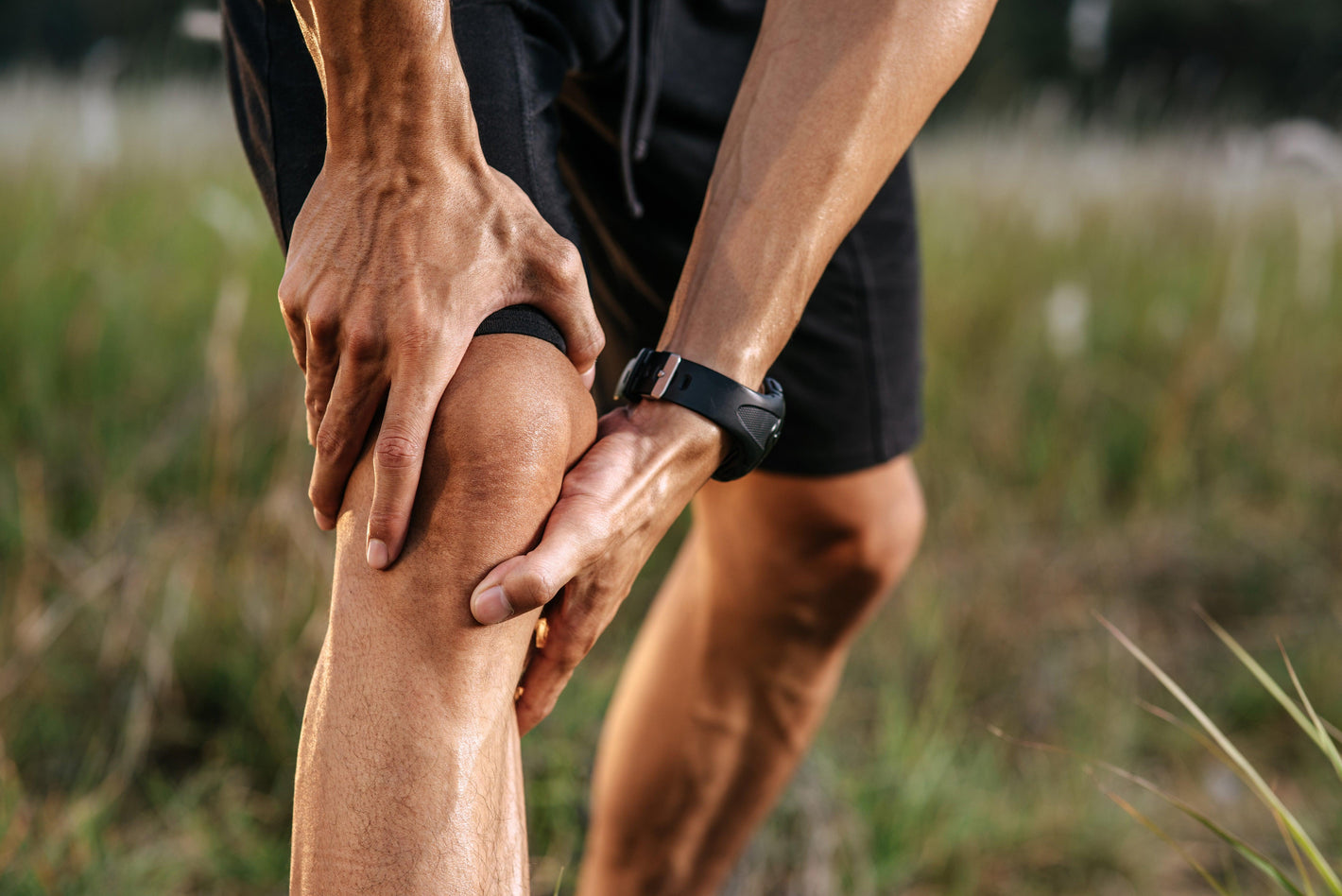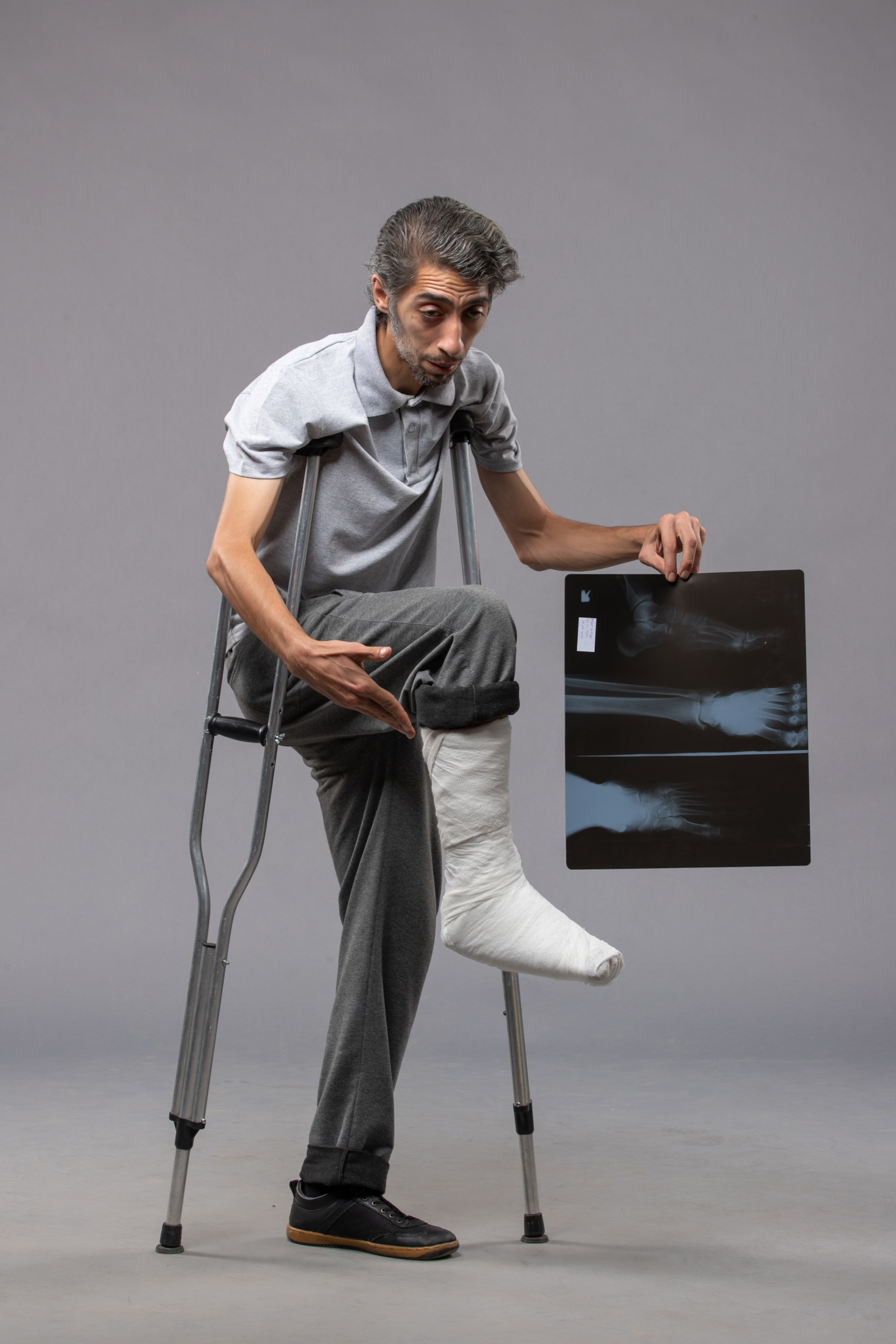Should I walk with gout?
.png?v=1674478224134)

Related products

Mild to moderate walking can be helpful in gout, but you must be careful before walking with a gout flare.
Gout is a disease of joints that causes inflammation and pain. It commonly occurs in the big toe and may affect only a single joint. However, it can also affect the joints in the knees and ankles. It arises due to problems with protein metabolism.
The condition is fairly common in the UK. An epidemiological study published in the Arthritis Research and Therapy in 2011 noted that the incidence rate of gout in men in the UK is higher at 4.42 per 1000 people per year, while in women, it was 1.32 per 1000 people per year. Regardless of the cause, it can severely compromise your quality of life.
Is there a risk in moving with gout?
Now, let's come to the main question. Is it safe to walk with gout? It is safe and even advised in some situations, but you need to be careful during an acute gout attack and a painful gout flare.
The crystals in the joints are very firm. So, if you also have other factors that can cause weak or soft bones, there is an increased risk of joint injury and worsening symptoms. The risk also becomes particularly higher if you accidentally do higher-intensity exercises or movements, which can cause severe pain and injuries.
Can you walk with chronic gout?
You should be clear that it is perfectly safe (except in some severe situations) to walk with gout, even if you have severe arthritis. Some sources have noted that performing joint-friendly activities is an important part of pain management in gout.
-
A recent animal model study published in PLOS One in 2020 found that moderate exercise and physical activity have an anti-inflammatory response and can mitigate some pathogenic risk factors.
A joint-friendly activity should not put too much pressure and strain on the joints, including jogging, cycling, etc. However, avoid jumping and climbing as they cause too much pressure on the joints.
It would help if you were cautious while walking with gout and start with low exercises and add slowly according to your body's tolerance. You can increase the duration and intensity if joints are tolerating, but do the opposite if the symptoms of pain worsen.
Can you walk during gout flares?
However, if you are experiencing sudden gout flares, avoid unnecessary walking to lower the pain and swelling. The sudden pain and swelling can aggravate, but walking is still beneficial for managing gout flare.
Why can you have gout?
The breakdown of proteins produces uric acid, which is removed from the body to maintain its constant level (2.7-7.3 mg/dL in females and 4-8.5 mg/dL in men) in the blood. Whenever this uric acid is not excreted, it accumulates in the joints causing painful swelling. The movement of joints becomes severely painful, and your physical activities are badly restricted. Severe pain is felt when the affected joints are moved.
Some people are even worried that doing so can further deteriorate the situation. Let's discuss if it is safe to walk with gout or not and what safety measures you can take while walking with gout.
If you suspect or have developed gout, regularly monitoring the blood uric acid levels can be a good thing to do. Our Uric Acid Blood Test is excellent for this job. It detects uric acid levels in the blood and tells you if you have gout. Click here to know more and place your order.
Before further discussion, you should know what the causes of gout are.
Read more: Can I have gout in my ankle?

How does gout develop?
As mentioned earlier, there is a problem with protein metabolism. One step in the metabolism of proteins is the formation of purines. Uric acid is the by-product of this reaction. This uric acid enters the blood and is removed into urine by the kidneys.
However, sometimes due to various reasons, e.g., excessive protein intake, metabolic disorders, obesity, blood disorders (e.g., leukaemia) or kidney issues, the levels of this uric acid begin to rise, producing a condition called hyperuricemia (serum uric acid levels of 7.0-8.5 mg/ dL or more depending upon gender).
The excessive uric acid will accumulate in the joints in the form of pointed uric acid (monosodium urate) crystals, which causes severe pain. The joints not only join the bones but also enable them to move. Therefore, gout can severely compromise your ability to move.
What are the common risk factors of gout?
Individual tolerance to the causative factors varies, and not all people with hyperuricemia will develop gout unless there are other risk factors. The common risk factors are;
-
Chronic renal diseases
-
Chronic hypertension (can cause renal impairment)
-
Obesity (excessive body weight increases pressure on the affected joint)
-
Diet rich in proteins, purines and fructose corn syrup
-
Advanced age (bone becomes more fragile with advanced age)
-
A family history of gout
-
Drinking alcohol (some alcoholic beverages have purines)
-
Being male (the risk of gout and hyperuricemia in males is almost double than it is in females due to higher uric acid levels in the blood)
-
The use of some drugs, e.g., diuretics

How to know if you have a gout flare or chronic gout?
Gout is easily identified even by the patients themselves by the following symptoms,
-
Stiffness in the joints
-
Warm, painful and swollen joints
-
Facial flushing
-
Shiny and redness skin on the inflamed joint
The symptom mostly doesn't persist forever and occurs in severe gout flares, which can last for weeks and improve gradually even if not treated. The common frequency of flares in the case of acute gout is 1-2 per year. However, it can vary from person to person, and some people can have just 1-2 flares in their entirety, while others may have rapidly relapsing flare-ups that don't resolve completely.
The increased movements while having painful and swollen joints can exacerbate the inflammatory process, further delaying the healing process.

Some useful tips for the pain management
Bone and joint pain can be very severe. It is more intense, deeper and sharper than muscle pain, and persistent joint pain can make life very tough. These pain management tips can help you to manage the pain associated with a typical gout flare.
-
Don't overdo the walking; start with slow and lower-intensity walks.
-
If you are going cycling, using a stationary bike can lower the risk of painful injuries.
-
Wear comfortable and supportive shoes
-
Accidental slips or falls can be dangerous, such as when your clothes are caught by nearby materials or equipment. Reduce this danger by using clothes that fit into your form.

However, gout flares can occur anytime, even if you are practising all precautions. The following tips will help you manage the flares.
-
Provide proper rest to the affected joint, as rest is a natural healer.
-
Elevate the affected joints to lower the risk of swelling caused by fluid accumulation (oedema), which can cause further complications.
-
Apply ice on the affected joints to reduce swelling and pain and warm.
-
Use walking aids, e.g., a cane, to relieve the pressure on the affected joints
-
Use painkillers, e.g., over-the-counter medicines, e.g., ibuprofen etc.
What are the treatment options available?
The treatment of chronic symptoms or acute flares is mostly symptomatic. Besides the medicinal options, you need to modify your lifestyle to reduce uric acid levels in the blood to reduce the risk of future gout flares.
The common treatment protocols are;
Non-steroidal anti-inflammatory drugs (NSAIDs)
These are moderate painkillers and are most commonly used, and some are even available over the counter. Common examples are diclofenac sodium/ potassium and ibuprofen. You may need a prescription for some NSAIDs, while some are available over the counter.
Corticosteroids
These are good for moderate to severe pain and include prednisone, dexamethasone, betamethasone etc. These should be prescribed by a doctor and are not safe during pregnancy and breastfeeding.
Opioid pain killers
These include hydrocodone, morphine, codeine etc., and are good for severe pain which is not responding to the above two categories.

Colchicine
It is a very effective anti-gout drug used to manage severe gout flares. It should be taken within 12 hours of an acute flare.
Find it on the Welzo store here.
Drugs to lower blood uric acid levels
Reducing uric acid levels to normal is an important part of gout management. Some drugs prescribed for this purpose are probenecid, allopurinol, pegloticase etc. These drugs can also lower the frequency of flares.
At Welzo.com, we have various drugs and medicines that help treat and manage Gout and other painful conditions. These include diclofenac sodium, allopurinol and colchicine. Click here to view our products place.
Allopurinol is an enzyme inhibitor which reduces uric acid levels by inhibiting its synthesis. Allopurinol 100mg tablets are available in the Welzo store. Click here for an online consultation and to place an order.
When should you visit a doctor?
The tips are useful only for home management until medical service is available. In principle, you should talk to your doctor in case of any symptoms. The gout flares can last for days to weeks, and you should go for treatment as early as possible because it is easy to manage at the early stages.
The doctor will conduct a thorough joint examination to determine whether the cause is gout. The doctor can also take the help of blood tests (to monitor blood uric acid levels), x-rays, ultrasonography, and joint fluid test (to monitor the crystals). The doctor may need to resort to more complicated surgical options, e.g., joint replacement and fusion.
Bottom-line
Gout is a severe joint inflammation that can affect any joint. It is due to the accumulation of uric acid crystals in the joints, reducing your physical activity. However, the use of joint-friendly activities and exercises will help in pain management during gout.
However, it would help if you were careful about the choice of exercises, particularly during acute flares. You can also use a physiotherapist's help to select the proper exercises for you. For better prevention, you need to modify your lifestyle to lower uric acid levels to prevent future gout flares.

Still, you may need to use medications to treat painful and acute flares. As it is a multi-factorial issue, you must follow a thorough program to fight this disorder.
In case of any issue, professional advice can be very helpful. Our team of experts is available for this job and will guide you in any issue related to the management and treatment of gout. Click here for a consultation and appointment.
























 Rated Excellent by 26,523+ Reviews
Rated Excellent by 26,523+ Reviews